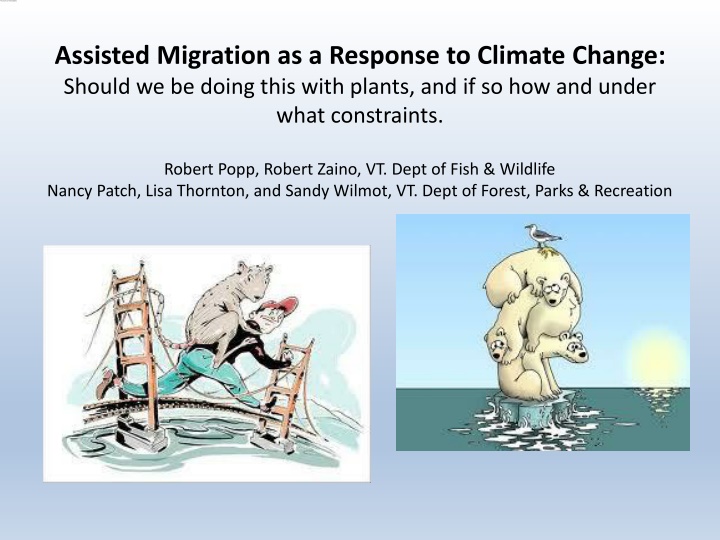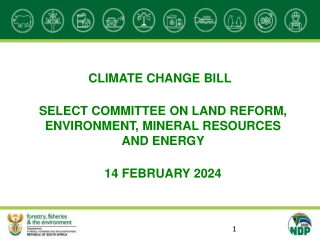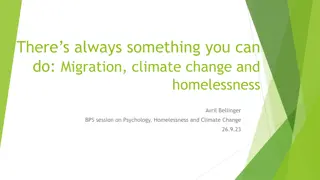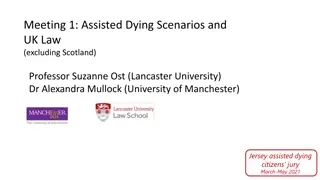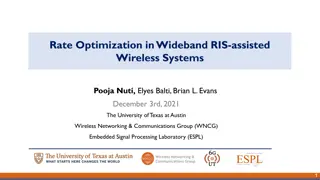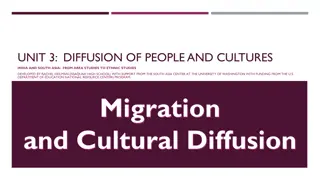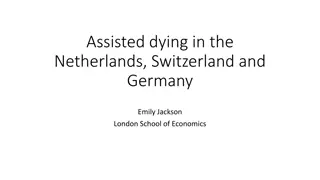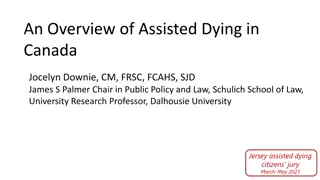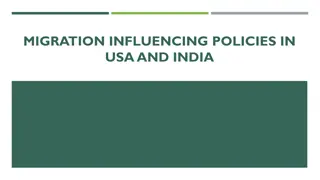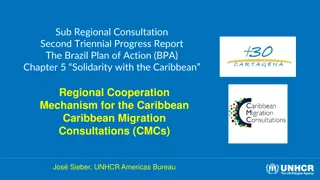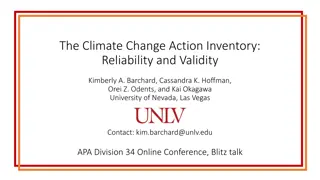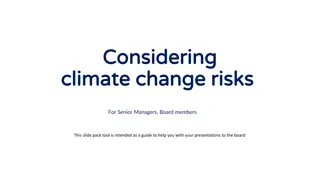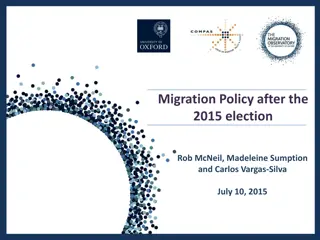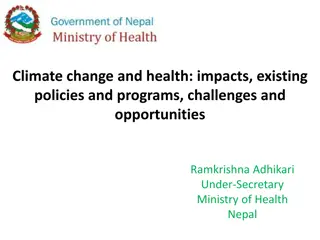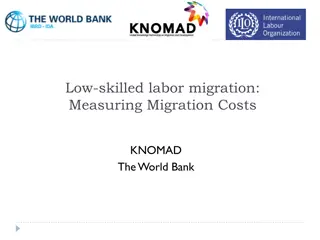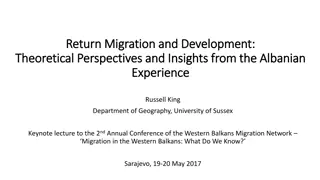Assisted Migration as a Climate Change Response: Plant Actions & Constraints
Debate on utilizing plants for assisted migration in response to climate change, considering benefits, risks, and existing policies in various regions
Download Presentation

Please find below an Image/Link to download the presentation.
The content on the website is provided AS IS for your information and personal use only. It may not be sold, licensed, or shared on other websites without obtaining consent from the author.If you encounter any issues during the download, it is possible that the publisher has removed the file from their server.
You are allowed to download the files provided on this website for personal or commercial use, subject to the condition that they are used lawfully. All files are the property of their respective owners.
The content on the website is provided AS IS for your information and personal use only. It may not be sold, licensed, or shared on other websites without obtaining consent from the author.
E N D
Presentation Transcript
Assisted Migration as a Response to Climate Change: Should we be doing this with plants, and if so how and under what constraints. Robert Popp, Robert Zaino, VT. Dept of Fish & Wildlife Nancy Patch, Lisa Thornton, and Sandy Wilmot, VT. Dept of Forest, Parks & Recreation Pinterest.com
Projected climate migrations for several states/regions in the Northeast based on summer heat index. Climate Impacts Assessments Oct 2006
Justification for Assisted Migration Species Rescue: to prevent extinction by moving species beyond their historic range. Maintain Genetic Diversity: moving selected populations within the current or historic range Maintaining Commercially Important Species: Increase the abundance of climate change winners &/or extending their range. Preserve Ecosystem Function: may involve moving a suite of species.
Risks of Assisted Migration Potential Invasiveness: species could become weedy or outcompete native species, i.e. red squirrel in NF Genetic: could result in hybridization between related but previously separated species. Introduction of Pathogens or Pests: Uncertainty of Future Conditions: Attempting to predetermine the composition of future plant communities Diversion of Resources: no guarantee of success since based largely on guesswork to predict future climate Treating the Symptom: not addressing causes of climate change and may provide false hope
(b) The gray shading indicates a suitable deployment area for white pine seeds in the absence of climate change. (c) The gray shading indicates a projected deployment area for the 2041 2070 time period based on the Canadian General Circulation Model Natural Migration Rate: Average for most trees = 50 km/century Migration Rate needed to keep up with projected Climate Change = 300 km/50yrs
Existing Policies British Columbia: Allow movement of Doug fir & other spp 200 m. up in elevation & one seed zone farther north. Allow planting of western larch beyond current range; up to 10% of seeds. Alberta: Allow movement up to 200 m. in elevation and 2 of latitude north. Quebec: Allow planting of more southern species as part of a mix with local species. Oregon: Climate change should be a consideration in forest management plans to address the change in species composition, refugia, and T&E species.
Vermont Guidelines Tier 1: No AM; self adaptation. S1, S2 Natural Communities, Old Forest, Connected Blocks Tier 2: Moving plants or seed within current range, using local sources, and maintaining the current natural community. Tier 3: Moving plants or seed within current range, using local sources, but changing the natural community, i.e. planting maple in black ash swamps Tier 4: Moving plants or seed into new areas, using local sources, that expand the edge of range. Tier 5: Moving plants or seed into new areas from long-distance species relocation. Requires review by Heritage Program, Stewardship Team, and the appropriate Scientific Advisory Group
Tiered Options for Assisted Migration Tier 1 Tier 2 Tier 3 Tier 4 Tier 5 Description No assisted Moving plants or seed within current range using local sources and within current natural community Moving plants or seed within current range using local sources but altering natural community Moving plants or seed into new areas using local sources that expand the edge of range Long-distance species relocation by moving plants or seed into new areas migration, self- adaptation For con- nected landscapes that allow species to move as a self-adapta- tion strategy To increase abundance of species expected to do well with climate change In anticipation of declines due to climate change or pests. Includes plantings of species that are expected to be adapted to climate change and also plantings Rescuing southern species by moving to VT Selection Criteria GMO plants, if considered, would be included in this
New England Plant Conservation Program (NEPCoP) Policy on Species Rescue 1. Managed relocation is a tool that should be considered part of overall strategies to conserve plants in the region, and its use should be guided by the best science available. 2. New England endemic (or near-endemic) taxa in habitats that are considered vulnerable to climate change should be researched as potential targets for managed relocation. 3. NEPCoP should be aware of species in the southern or Mid-Atlantic region that are being considered for managed relocation to New England, i.e. we re more likely to be recipients rather than donors.
